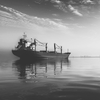The U.S. Navy, eager to keep its submarines hidden as much as possible, rejected three official recommendations aimed at preventing collisions like the one that sank a Japanese fishing boat off Hawaii on Friday, leaving nine people missing, feared drowned. The National Transportation Safety Board had faulted the Navy's submarine surfacing procedures, its way of reporting accidents and what the board deemed inadequate rest time for key watch officers while submarines are under way. When the Navy spurned all of its advice, the independent five-member board shut its books on the case, terming the Navy's response "Closed -- Unacceptable Action," documents made available on Monday showed.
"It is regrettable that the Department of the Navy does not plan to act positively on any of the three recommendations suggested by the Safety Board," then board chairman James Kolstad wrote to Adm. Frank Kelso, who was then chief of naval operations.
"The recommendations were made, not with the intent of compromising the Navy's important and strategic mission, but rather to ensure the safe and legitimate use of U.S. coastal waters by all who sail upon them," he said in an April 29, 1991, letter to the Navy chief.
The board prodded the Navy after investigating a June 14, 1989, fatal accident in which the nuclear-powered attack submarine USS Houston caused a tug boat to sink off Long Beach, California.
The Houston belongs to the Los Angeles class of submarines as does the USS Greeneville, which rammed the trawler Ehime Maru on Friday while popping to the surface in a drill about 10 miles (15 km) south of Pearl Harbor.
Citing the Houston accident, the board urged that sonar gear be used in the "active" mode in U.S. waters before surfacing -- sending out pings, rather than just listening for telltale activity -- notwithstanding Navy qualms about giving away a submarine's presence.
It found "officers on deck" lacked adequate rest time and urged the Navy to amend procedures to alert U.S. Coast Guard search-and-rescue teams whenever a naval ship reports an accident with another vessel in U.S. coastal waters.
Each of these issues is bound to be scrutinized in investigations into why the crew of the 360-ft. (110 m) Greeneville failed to detect the 190-ft. (59-m) Japanese boat before punching through it during a breaching maneuver known as an emergency main-ballast blow. The United States is "absolutely committed" to a transparent and complete investigation of what happened, President George W. Bush's national security adviser, Condoleezza Rice, said in a television interview.
Some of the survivors have asked why the submariners did not join directly in rescue efforts, particularly in the half-hour or so just after the sinking, before Coast Guard and Navy rescue ships and aircraft arrived.
The safety board, whose staff has already begun interviewing survivors, heads the civilian investigation into the Hawaii accident since it involved a private vessel in U.S. waters. The Navy will carry out an investigation of its own.
Typically, the board's investigation takes at least a year but new -- or reiterated -- safety recommendations "can come at any time," said Ted Lopatkiewicz, a board spokesman. Under standard Navy operating procedures, a submarine surfaces only after hunting for surface traffic with sonar, an underwater acoustic system, followed by a visual check at periscope-depth -- about 60 feet (20 metres).
Sonar may be either passive -- listening on devices called hydrophones for noises such as the thrum of engines -- or active -- bouncing ping-like signals off objects in the vicinity to gauge their distance.
The safety board asked the Navy to require the use of active sonar in U.S. coastal waters except when doing so would jeopardize a national security-related need to stay hidden as long as possible.
Rejecting this advice, the Navy said a submarine's commanders needed leeway depending on the circumstances.
"The use of various active sensors, which make a submarine highly detectable, is not appropriately subject to dictation ... but is properly determined by the (commanders) given the tactical situation," the deputy assistant chief of naval operations for undersea warfare, Rear Adm. R.G. Jones, wrote to Kolstad on Nov. 19, 1990.
He said active sonar emissions can be detected "at very long range, revealing the presence ... to other military vessels well outside of U.S. territorial waters."
In addition, Navy officers said, listening passively is a better way to detect surface traffic -- a view shared by Robert Spindel, director of the Applied Physics Laboratory at the University of Washington in Seattle.
Active sonar can be fooled by echoes returned from the sea bed, the surface and matter suspended in water, said Spindel, who has researched active and passive sonar for the Navy.
"The sea surface itself is a very strong sonar reflector, and distinguishing a close by surface ship from the sea surface background clutter can be very difficult, if not impossible," he said in a telephone interview.
Turning down the board's second recommendation, Jones said evidence from the Houston incident "does not indicate that an additional procedure requiring additional rest" for officers was required before they stand watch.
Rejecting the third, he said the evidence did not show that contacting Coast Guard search and rescue teams would have "changed the outcome" of the Houston's harm to the tug.
In the 1989 accident, the Houston, rising to periscope depth for a fix from a navigation satellite, snagged the tow line of the tug Barcona, which had two empty barges in tow.
The Houston then went into an emergency descent and the force pulled the tug under water at the stern, drowning a crew member. – (Reuters)
Subscribe for
Maritime Reporter E-News
Maritime Reporter E-News is the maritime industry's largest circulation and most authoritative ENews Service, delivered to your Email five times per week










